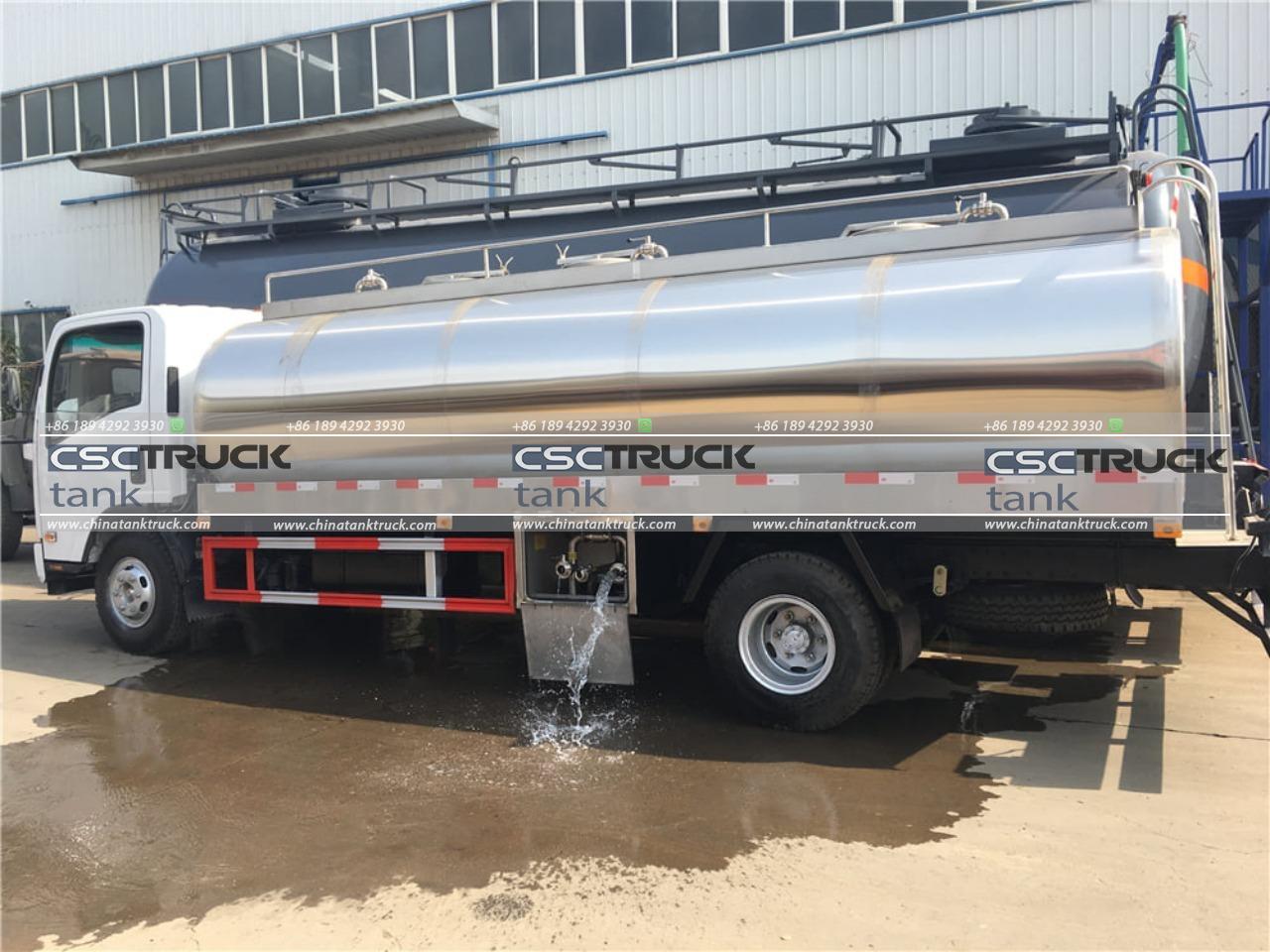How Does a Milk Bulk Tank Work?
In the dairy industry, ensuring that milk is stored, transported, and handled correctly is crucial for maintaining its quality and safety. One of the most important tools in this process is the milk bulk tank. This article delves into the workings of a milk bulk tank, explaining its components, how it operates, and why it’s essential for modern dairy farming.
Understanding the Milk Bulk Tank
A milk bulk tank is a large, insulated container designed to store milk at a controlled temperature before it is transported to processing facilities. Its primary function is to preserve the milk’s freshness and prevent bacterial growth, which is critical for maintaining the milk’s quality and safety.

Components of a Milk Bulk Tank
1. Tank Body: The main body of the tank is typically made from stainless steel due to its durability, ease of cleaning, and corrosion resistance. The tank is designed to be both sturdy and hygienic, with smooth surfaces to prevent milk residue buildup.
2. Insulation: To keep the milk at the appropriate temperature, the tank is equipped with high-quality insulation. This insulation helps maintain a consistent temperature, which is crucial for preventing spoilage. The insulation layer is usually sandwiched between the tank’s outer shell and the inner lining.
3. Cooling System: A milk bulk tank features a built-in cooling system, often using either a refrigeration unit or an ice bank system. The cooling system works by circulating a refrigerant or coolant through coils or plates that are in direct contact with the milk. This process extracts heat from the milk, keeping it at the desired temperature.
4. Agitator: To ensure uniform cooling and prevent the formation of a cream layer, the tank is equipped with an agitator. This device gently stirs the milk, maintaining its homogeneity and improving the efficiency of the cooling process.
5. Temperature Control: The tank includes temperature sensors and a control system that monitors and regulates the milk’s temperature. This system ensures that the milk remains at a consistent temperature, typically around 37-39°F (3-4°C), which is optimal for preserving its quality.
6. Loading and Unloading Mechanisms: The tank has openings for loading and unloading milk. These openings are equipped with valves and pumps that facilitate the transfer of milk in and out of the tank. These mechanisms are designed to minimize contamination and ensure smooth operation.
7. Cleaning System: Hygiene is paramount in milk storage, and milk bulk tanks are equipped with automated cleaning systems. These systems often include spray balls or nozzles that distribute cleaning solutions throughout the tank, ensuring that all surfaces are thoroughly cleaned and sanitized.
How a Milk Bulk Tank Operates
1. Milk Collection: When milk is collected from the dairy farm, it is pumped into the bulk tank through a designated inlet. At this stage, the milk may still be warm, especially if it’s been recently milked.
2. Cooling Process: Once inside the tank, the cooling system kicks in. The cooling coils or plates absorb heat from the milk, rapidly bringing its temperature down to the desired level. The agitator helps distribute the cooling effect evenly throughout the milk.
3. Temperature Regulation: The temperature control system continuously monitors the milk’s temperature. If the temperature begins to rise above the set point, the cooling system activates to bring it back within the safe range. This constant monitoring ensures that the milk stays fresh and free from bacterial contamination.
4. Milk Storage: The milk remains in the bulk tank until it’s time for it to be transported to the processing plant. During storage, the milk is kept at a stable temperature and periodically stirred by the agitator to maintain its quality.
5. Loading for Transport: When the milk is ready to be transported, the loading mechanism is engaged. The milk is pumped out of the tank and into a tanker truck or other transport vessel. During this process, care is taken to prevent contamination and ensure that the milk remains at the appropriate temperature.
6. Cleaning and Maintenance: After each use, the bulk tank undergoes a thorough cleaning process. The automated cleaning system circulates cleaning solutions throughout the tank, ensuring that all milk residues are removed. Regular maintenance is also performed to check for any wear and tear on the tank and its components.

Why a Milk Bulk Tank is Essential
The milk bulk tank plays a critical role in the dairy industry for several reasons:
1. Quality Preservation: By keeping milk at a consistent, low temperature, the bulk tank helps preserve the milk’s flavor, texture, and nutritional value. This is essential for producing high-quality dairy products.
2. Hygiene and Safety: The tank’s design and cleaning systems ensure that the milk is stored in a sanitary environment, reducing the risk of contamination and spoilage.
3. Efficiency: Bulk tanks streamline the collection and transportation process, allowing dairy farms to handle large volumes of milk efficiently. This reduces the time between milking and processing, further contributing to the milk’s quality.
4. Regulatory Compliance: Dairy farms must adhere to strict regulations regarding milk storage and handling. The bulk tank helps farms meet these requirements by providing a reliable and controlled storage solution.
Conclusion
The milk bulk tank is an indispensable component of modern dairy operations, ensuring that milk is stored and transported under optimal conditions. Through its advanced cooling and monitoring systems, the tank helps maintain the quality and safety of milk, supporting the efficiency and hygiene of dairy farming. As technology continues to advance, milk bulk tanks will likely evolve to incorporate even more sophisticated features, further enhancing their role in the dairy industry.


